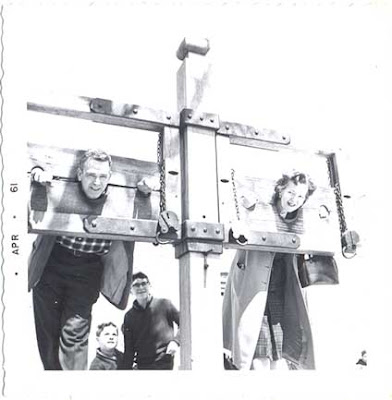One of my favorite postcard collecting topics is ""Big Things" or "Giant Roadside Attractions." Here are some postcards showing big and VERY BIG coffee pots. The first postcard above is circa 1959 and shows
The Big Coffee Pot in Winston-Salem, North Carolina that was already more than 100 years old. It was originally erected as the sign of a tinsmith and is now a city landmark. It is 7 feet 3 inches tall with a volume of 740 gallons.
Several towns have water towers decorated to look like coffee pots. The one on the next postcard is in Stanton, Iowa and was erected in 1971. This 120-ft.
"Swedish-style" pot is painted with decorative hearts and flowers. The pot is 35-ft. high and is on top of a 90 ft. tower. It holds 40,000 gallons. Stanton is also the home of similarly decorated coffee cup water tower holding 150,000 gallons that was erected in 2000.
The next postcard shows an
information booth on Washington Island, Door County, Wisconsin. This giant coffee pot was made of galvanized steel in 1941 and is painted with a Norwegian Rosemaling design. It has a door
and two windows. It was originally used as a store and then as a
tourist information booth, but now is just a local landmark.
The next two images are modern postcards (published about 20-30 years ago). The yellow (colorized and undated) building is now painted differently and known as
Bob's Java Jive. There is a Lite Beer sign visible in one of the windows. This building is in Tacoma, Washington and was built in 1927 as the Coffee Pot Restaurant.
(postcard photograph by Roger Lantaff, Island Photo-Graphics)
The last postcard is titled EAT and is a
1939 photograph by Frank Navara (postcard by Fotofolio). This building is no longer standing. It was the Coffee Pot Restaurant in Bremen, Indiana. The building was a wooden silo that was turned into the 18-foot-diameter restaurant in 1932. (information source quoted by several sites from
Bremen and North Central Indiana by Acadia Publishing, 2001).
For More Vintage Images
















































